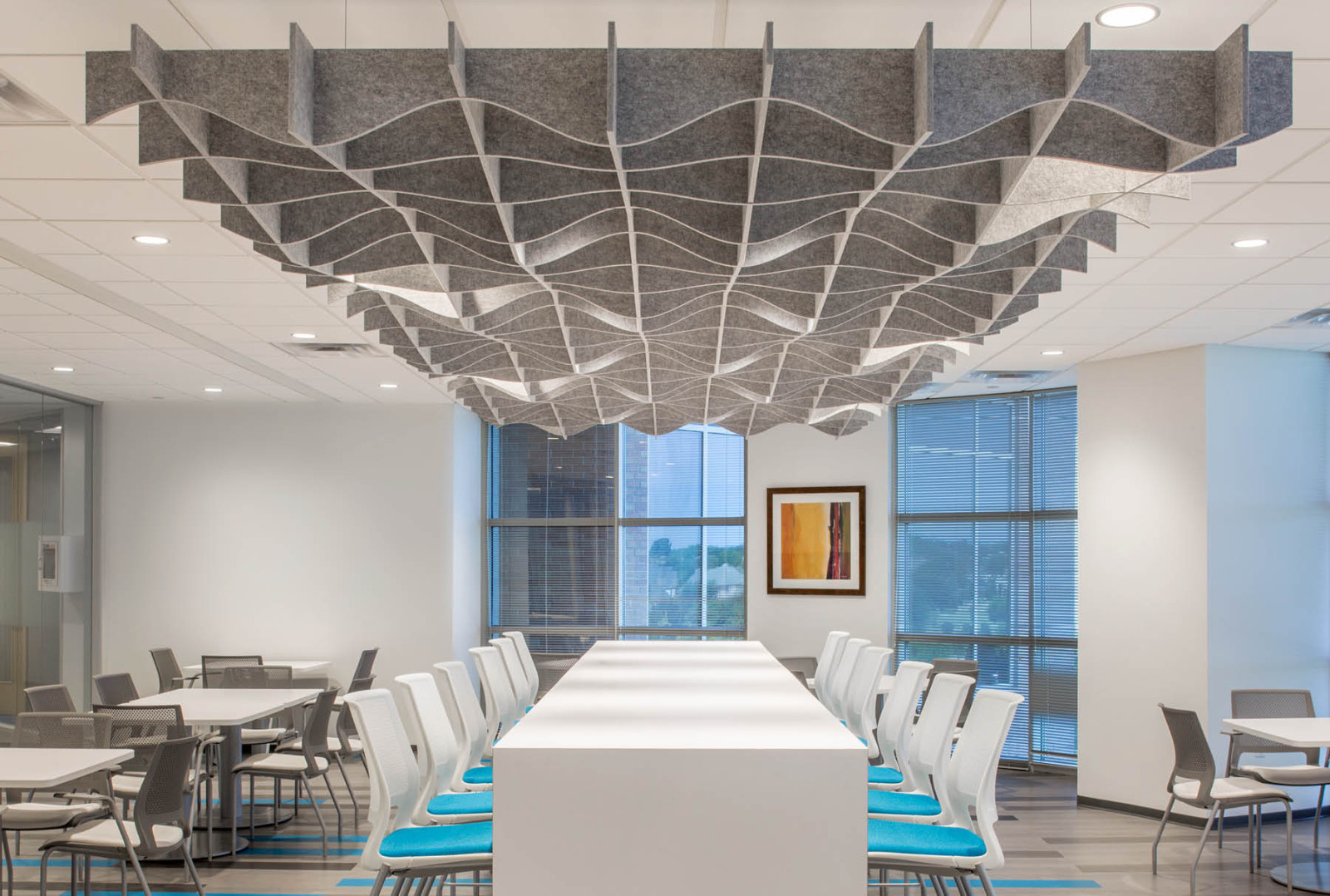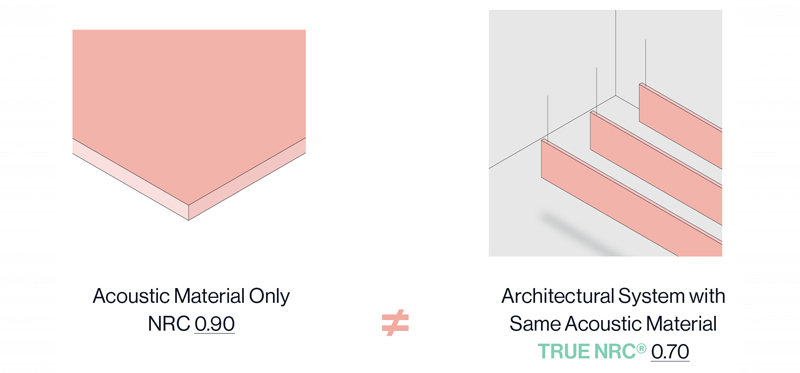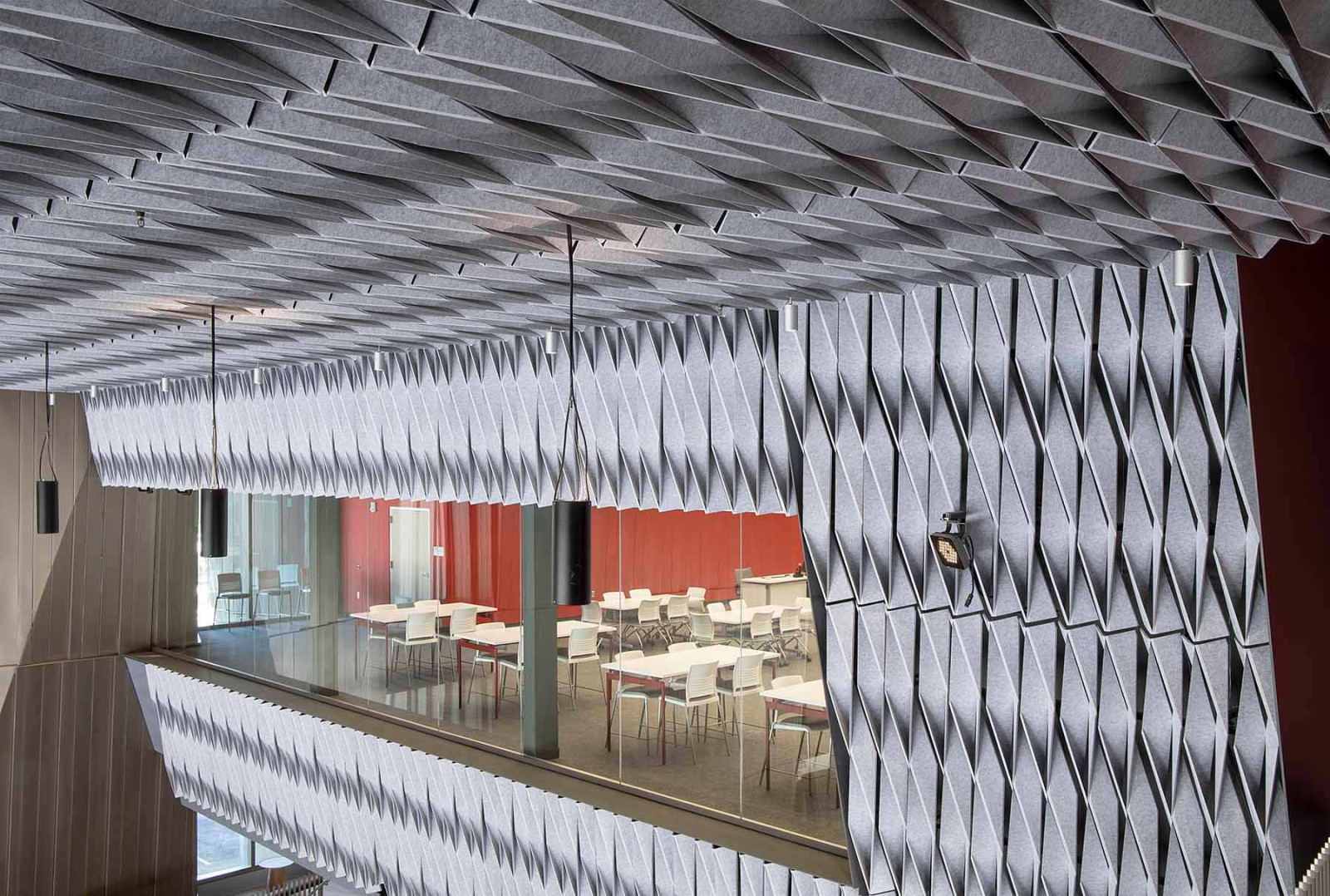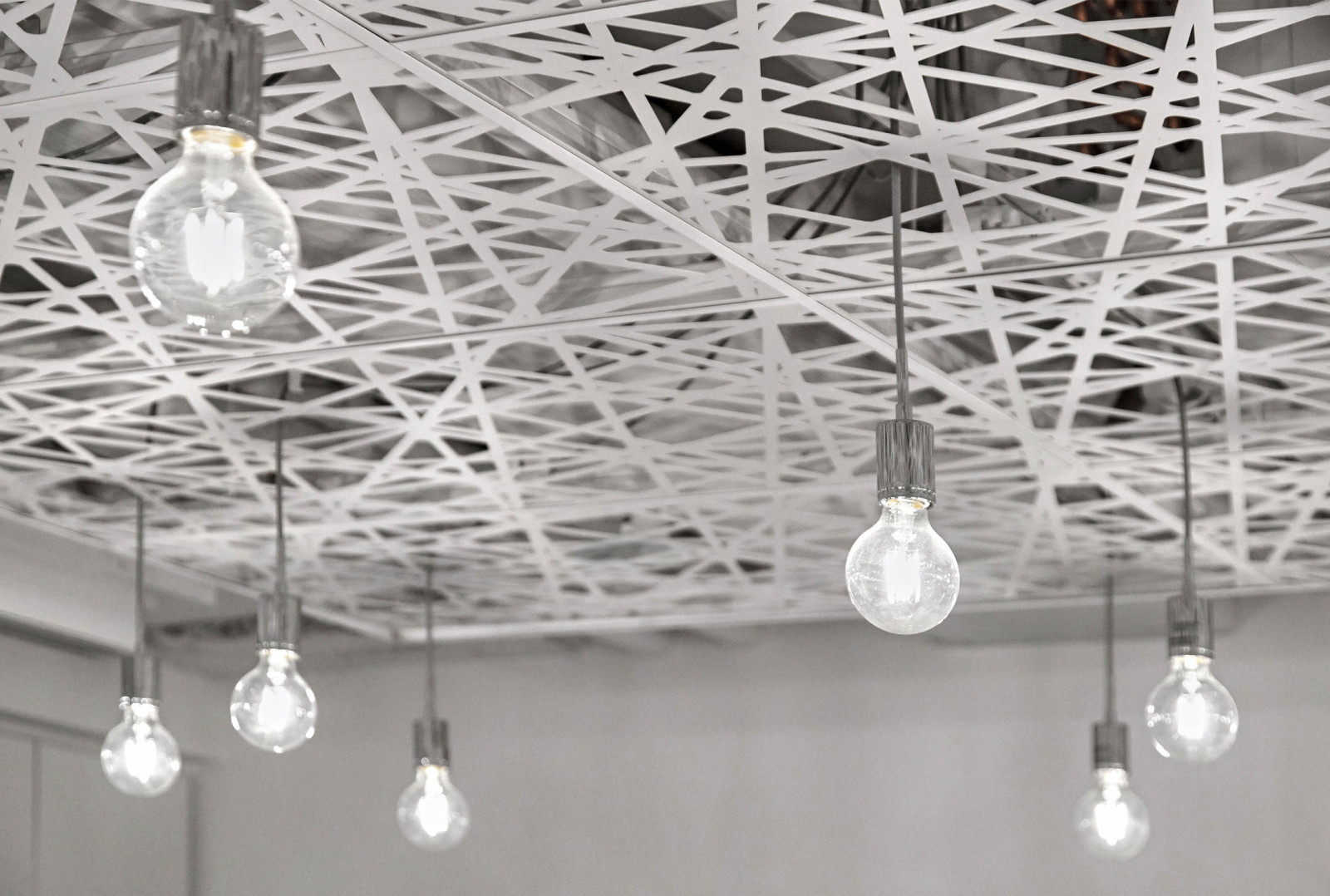NRC claims made by manufacturers are often incorrect and unregulated – equip yourself with knowledge using Arktura’s True NRC®.

“Reception Desk” Featuring: SoftScreen® by Arktura
If you’re planning to purchase acoustic, sound-absorbing products for a project, then you’ve probably come across the term Noise Reduction Coefficient (NRC) rating. What might surprise you is that this rating is often a misleading representation of actual acoustic performance. Some products are advertised or tested with loopholes and workarounds to bypass true NRC accuracy and appear more effective.
Arktura is looking to help filter through the chatter by communicating the knowledge needed to understand acoustic testing while simultaneously providing acoustic results that are transparent, accurate, and reflective of real-world conditions.
Read on below or create an account to download our free guide now!
Download the Guide Now!
What Is an NRC Rating?

“QBE Dallas” Dallas, Texas, Interior Architects, Thomas McConnell (Photographer), Featuring: Sine® – Standard Ceiling Systems – Acoustical by Arktura
NRC is often used to evaluate acoustic absorption by calculating a rating that typically lies between 0.00 to 1.00. It rates the ability of a material to reflect or absorb sound by measuring the effectiveness of a square-unit of absorption. Thick elements with 3-dimensional properties can receive higher than a 1.00 NRC due to increased surface area. A material that reflects all of the sounds that hit it receives a rating of 0.00. A material that absorbs all of the sounds that hit it receives a rating of 1.00. The higher the NRC rating number, the better the acoustic performance you’ll get from a given product.
There are additional performance metrics for acoustics, such as STC for sound transmission or SAA for sound absorption under a range of frequencies. However, NRC is an industry-standard in architecture because its focus is on sound absorption coefficients for the four fundamental frequencies of human speech: 250 Hz, 500 Hz, 1000 Hz, and 2000 Hz. For this reason, accurate NRC testing is critical in creating speech privacy and comfortable shared environments.

“Amicus Therapeutic” Philadelphia, Pennsylvania, CRB, Connie Zhou (Photographer), Featuring: Custom Acoustic Wall & Ceiling Elements by Arktura
Most materials used in acoustic absorption have a rating below 1. However, material testing methods vary, so the uniform measurement of NRC across different product types may often be challenging to evaluate.
NRC rating evaluations vary from product to product, even within one space. It is essential to understand how it is determined and how it can change between products to make the most informed purchasing decision.
Acoustic Panel, Ceiling Tiles, Material, Perforations and NRC Tests
Acoustic testing is a necessary, costly, and time-consuming process. Manufacturers may test only one product or a single raw material and advertise the same results for a whole product line. If a product is perforated, installed, or formed in different ways, then the acoustic performance will be different.

Beware of the same result for all products. NRC is specific to geometry and pattern.
It is crucial to learn how to accurately determine and compare NRC results and ensure that testing always reflects real-life conditions. NRC Results can vary drastically depending on the mounting type used in testing. Various mounting types recreate specific installation scenarios and can support or diminish acoustic performance. Changing the material’s size, shape, or installation method can also reduce the actual NRC rating. Manufacturers often withhold testing conditions and other information until they’ve figured out the most favorable mounting type to raise NRC results.
Example: A manufacturer advertises an acoustic product (a module made from 1” acoustic material), advising that the material achieves up to a .80 NRC. However, while the raw material itself does test to .80 NRC, the module created from that material might only test to .50 NRC. A material’s acoustic performance is not the same as a product’s results made from that material.
The NRC of a material is not necessarily the NRC of a product made from that material. This differential is an example of where NRC ratings can be misleading.

A material in its raw form may have an NRC of 0.90, but when installed as baffles, the properties are changed, and its TRUE NRC® rating may be determined as 0.70.
Suppose you notice that every product in a company’s line gets the same rating regardless of its size, design, baffle configuration, slits, cuts, or installation method. In that case, this is a warning sign that you may not be getting the NRC rating that you expect.
The surface area and how the material is mounted can also affect the rating, making it difficult to know how well a product will perform where and when you need it.

NRC test setups can vary wildly, and different application scenarios require different testing methods. TRUE NRC® is designed around real life conditions. Learn how to recognize these differences to ask for the right results.
Why the NRC Rating Matters

“University of Arizona Health Sciences Innovation Building” Tuscon, Arizona, CO Architects, Ed Taube (Photographer), Featuring: Softfold® Ceiling Systems, a custom wall solution by Arktura
You want to be sure that acoustic, sound-absorbing products will perform as you need and expect them to. Materials need to perform to the required specified needs. For example, you are transforming a work environment for safety, wellness, and comfort by reducing echoes in conference rooms, or creating a quieter studying environment.
Suppose you’ve chosen material for its looks, but the NRC rating is unreliable. In that case, it’s important to consider alternatives that will better suit your acoustic needs.

“Brentwood Library” Brentwood, California, Mark Davis, Jonathan N Mitchell (Photographer), Featuring: SoftGrid® Round Acoustic Baffles by Arktura
Understanding the calculation of NRC ratings and how this may affect your space enables you to be efficient with the installation and confident that it will perform as needed. It is critical to consider acoustic control and NRC when designing your space for speech and sound clarity. There’s nothing worse than having stylish baffles visible on your video call background that don’t reduce echoes. Arktura has your back and offers a lineup of acoustic solutions that provide accurate NRC ratings without compromising aesthetics.
What Can You Do?

“Detail Image of Installed Ceiling System” Featuring: Trace® – Straight – Ceiling & Wall Panel Systems – Acoustical System by Arktura
The NRC rating can help you choose the right material for your job, but only if it’s an accurate, true rating. There are three things to consider to make a satisfying purchasing decision.
First, ask about the NRC rating of multiple products that interest you. The rating should differ from product to product. If it does not, then consider this a CAUTION sign.
Second, ask how your planned installation may change the ratings and discuss your needs with the manufacturer. They should be able to advise you on how the NRC may vary with your installation and make personalized recommendations.
Lastly, suppose you feel you’re not getting the information you need to make an informed decision. You can always request third-party testing from the manufacturer to get a better understanding of the NRC.
Trust True NRC® From Arktura

“The Iron Whale” Asbury Park, New Jersey, TSG Design, Nemo Tile Co. (Photographer), Featuring: Atmosphera® Standard – Swell – Standard Ceiling Systems by Arktura
True NRC® is born out of Arktura’s commitment to transparency and education and serves as our pledge to provide this accuracy. We factor in all considerations and installation arrangements to provide a number that accurately reflects our products’ acoustic performance.
You can rest assured that using proper testing methods to evaluate your project results will reflect real-life conditions.
Arktura developed the True NRC® rating to help you achieve a confident understanding of every product’s actual acoustic performance. If you’re concerned about NRC accuracy and how it can affect your project, ask Arktura for assistance to understand your space’s specific needs.
Want to learn more now? Login or register to download our free guide now!
Download the Guide Now!














